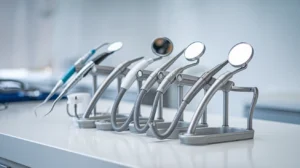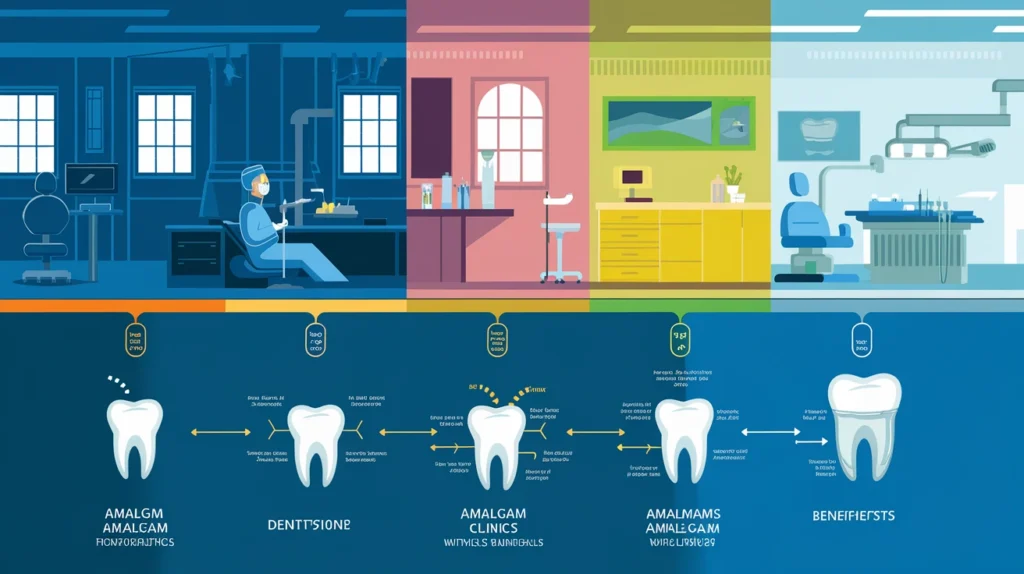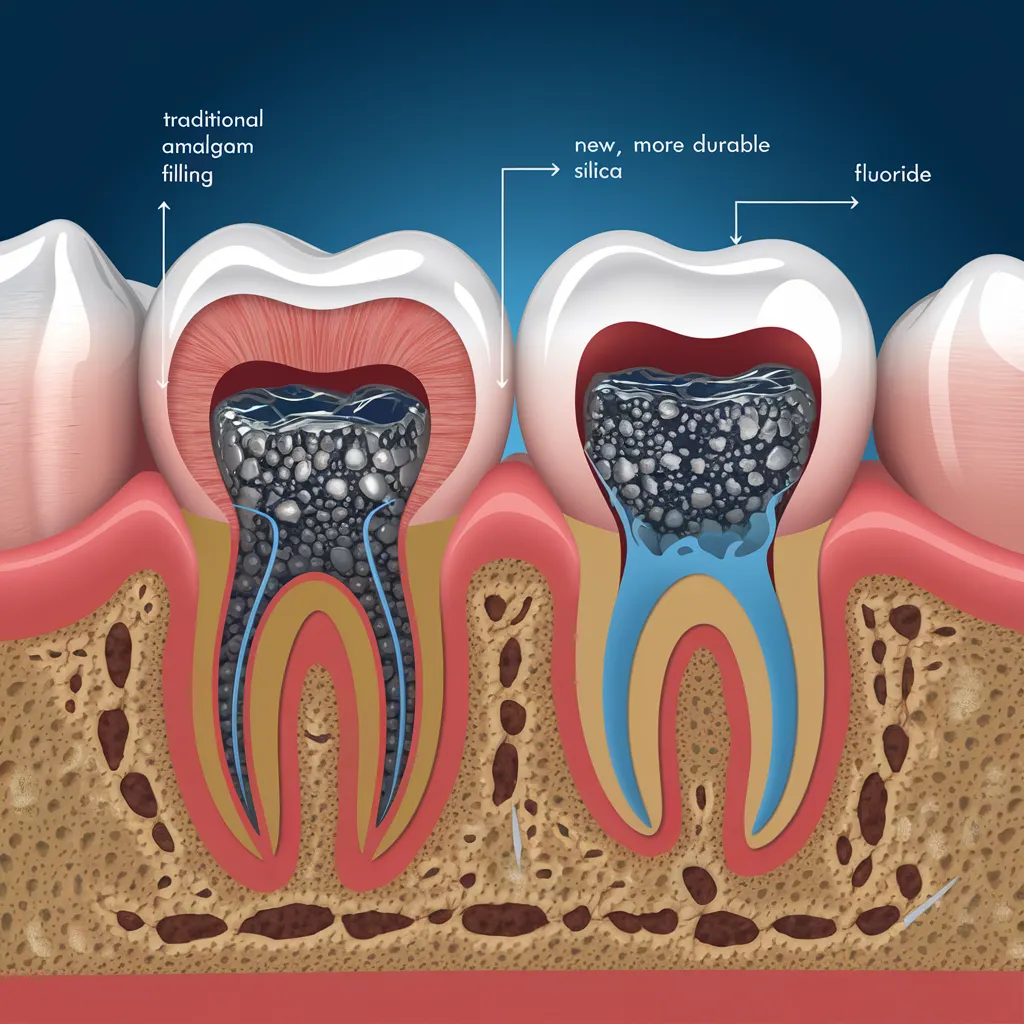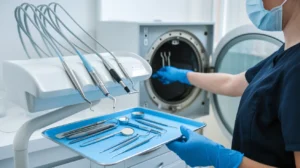
How to Choose the Best Dental Mouth Mirror for Oral Care
Picking the right dental mouth mirror might seem like a small task, but it’s actually pretty important for keeping your teeth and gums healthy. With so many options out there,

Dental amalgam, often known as silver fillings, has been a staple in dental care for over a century. It’s a mix of metals used to fill cavities and repair teeth. While it’s been around for a long time, there’s still a lot to learn about its types, benefits, and the debates it stirs up. This article will take you through the history, composition, and advantages of dental amalgam, shedding light on why it remains a popular choice among dentists.
Imagine going back to ancient times when dental care was, well, not what it is today. Early on, folks were already trying to fix teeth, and they used some pretty wild stuff. Back in the day, the Chinese were mixing up a paste of silver and mercury. Fast forward to the 1800s, and in France, they were experimenting with alloys made from bismuth, lead, tin, and mercury. It was a bit of a rough start, but this was how dental amalgam began to take shape.
The story gets more interesting when the Crawcour brothers brought dental amalgam to the U.S. in 1833. Picture this: they were using powdered silver coins mixed with mercury. Yeah, it sounds a bit strange, but it worked, sort of. There were some issues, like the material expanding after it was set, which wasn’t ideal. But hey, it was a start, and people were getting on board with this new way of fixing teeth.
Enter G.V. Black, a name you might not know but definitely should if you’re into dental history. In 1895, he came up with a formula that pretty much set the standard for modern dental amalgam. His mix included 67% silver, 27% tin, 5% copper, and 1% zinc. It was a game-changer, and this formula hung around for decades. Black’s work really put dental amalgam on the map, making it reliable and effective.
Now, let’s talk about high copper alloys. These came into play in the 1960s and really shook things up. The addition of more copper made the amalgam stronger and less prone to corrosion. This was big because it meant fillings lasted longer and performed better. It’s kind of like upgrading from a flip phone to a smartphone—everything just worked better. So, high copper alloys have been a huge part of why dental amalgam is still around today.
Dental amalgam has come a long way from its early days. From the experimental mixes of ancient times to the refined formulas we use now, it’s been quite a journey. This evolution reflects our ongoing quest to improve dental care and make sure everyone can smile with confidence.
Conventional amalgam alloys, often referred to as low copper amalgams, have been a staple in dental practices for years. They typically contain a mixture of silver, tin, and copper, with a small amount of zinc added. The silver-tin alloy forms the base, contributing to the overall strength and durability. Copper, although present in low quantities, plays a role in enhancing the mechanical properties of the amalgam.
High copper amalgam alloys were developed to improve upon the weaknesses found in conventional alloys. By increasing the copper content, these alloys reduce the formation of the gamma-2 phase, which is known to be the weakest and most corrosive component of dental amalgam. This enhancement results in a more durable and reliable restoration, making high copper amalgams a preferred choice for many dentists today.
Each metal in dental amalgam serves a unique purpose:
These metals work together to create a balanced material that withstands the pressures of daily use.

Zinc is often added to dental amalgams in small amounts, primarily to act as a deoxidizer during the manufacturing process. This can help prevent premature corrosion and extend the life of the restoration. Other additives, such as palladium or indium, may also be included to further enhance the properties of the amalgam, offering additional benefits like improved mechanical strength or reduced mercury vapor release.
In the ever-evolving field of dentistry, understanding the composition and types of dental amalgam is crucial for making informed decisions about patient care. While newer materials continue to emerge, the tried-and-true nature of dental amalgam ensures its place in the toolkit of many dental professionals.
Dental amalgam has been a go-to for dentists for ages because of its incredible durability. People love it because it can withstand the daily grind of chewing and biting. Unlike some other materials, amalgam fillings can last for many years, sometimes even decades, without needing a replacement.
When it comes to price, dental amalgam is a winner. It’s generally more affordable compared to other types of fillings, like composites or gold. This makes it a popular choice, especially for those on a budget who still want to ensure their dental health.
Dentists often prefer amalgam because it’s pretty straightforward to use. It doesn’t require a super dry environment like some other materials, making the procedure quicker and easier. Plus, it can be placed in one sitting, saving both the dentist and the patient time.
Amalgam is tough. It stands up well to the forces of chewing and grinding, which means it’s less likely to crack or break compared to some other materials. This makes it ideal for areas in the mouth that experience a lot of pressure, like the back teeth.
Despite the rise of newer materials, dental amalgam remains a staple in dentistry due to its proven track record and practical benefits. It’s a classic choice that continues to serve patients well.
Dental amalgam has been under scrutiny for its mercury content. Mercury, being a significant component, raises eyebrows about potential health risks. Concerns revolve around mercury vapor released during the placement and removal of amalgam fillings. Some argue these vapors could lead to health issues, though scientific consensus varies. Many dental professionals maintain that amalgam is safe, yet, the debate continues.
Aesthetic concerns are another downside of dental amalgam. The metallic color of amalgam fillings can be quite visible, making them less appealing, especially in front teeth. Patients often prefer tooth-colored alternatives like composite resins for a more natural look.
The environmental footprint of dental amalgam is also a hot topic. Mercury from dental offices can contribute to environmental pollution if not managed properly. Dental practices are encouraged to use amalgam separators to capture and recycle mercury waste, reducing its release into water systems.
The “Amalgam Wars” refer to the heated debates over the use of amalgam in dentistry. The first “war” began in the 19th century, when the American Society of Dental Surgeons condemned amalgam use due to toxicity fears. Later, in the 1920s and again in the 1980s, renewed concerns about mercury’s health impact fueled further controversy. These debates have shaped dental practices and policies worldwide.
The ongoing debate around dental amalgam highlights the balance between its practical benefits and the potential risks. While some advocate for its continued use due to its durability and cost-effectiveness, others push for alternatives that align better with modern health and environmental standards.

In the 1990s, a new technique emerged where dentists began bonding amalgam restorations to the tooth structure. This method involves etching the enamel and dentine with a conventional etchant, followed by applying a chemically-cured resin-bonding agent. The amalgam is then condensed into the cavity before the resin sets. One of the key benefits of this approach is the conservation of tooth structure, along with increased fracture strength comparable to composites. However, it does come with challenges, such as the clinical difficulty of handling more viscous bonding agents.
Gallium alloys have been explored as mercury-free alternatives to traditional dental amalgam. These materials, which include combinations like Pd-Ga and Ag-Ga, were initially proposed in the early 20th century but faced challenges until improvements were made in the 1950s. Gallium-based materials have shown physical and mechanical properties that can match or even exceed those of conventional amalgams. This makes them a promising option for those concerned about mercury content.
Recent years have seen refinements in the composition of dental amalgams, focusing on enhancing their properties and reducing mercury content. High-copper amalgams, for instance, have been developed to provide better corrosion resistance and increased strength. These advancements aim to extend the lifespan of restorations while maintaining their effectiveness in dental procedures.
The future of dental amalgam looks towards further innovations that may include even more biocompatible materials and techniques that minimize environmental impact. As research continues, the goal is to develop materials that offer the benefits of traditional amalgam while addressing modern health and environmental concerns.
Despite the controversies surrounding its use, dental amalgam remains a reliable choice for many practitioners, thanks to its durability and ease of use. The ongoing advancements in its technology promise to keep it relevant in the field of dentistry for years to come.
For a detailed review of dental amalgam’s history and developments, consider exploring further insights into its evolution.
Dental amalgam has been a staple in restorative dentistry for ages. It’s mainly used for filling cavities in the back teeth, thanks to its strength and durability. Dentists often choose amalgam for large fillings where the chewing pressure is high. Its ability to withstand the forces of biting and grinding makes it ideal for molars.
In pediatric dentistry, amalgam is often employed for children who may not be able to maintain the stillness needed for more complex procedures. Its quick placement and ability to set rapidly are huge advantages. Amalgam is also less sensitive to moisture during placement, which is beneficial when treating young patients who might find it challenging to keep their mouths dry.
Amalgam is frequently used for core build-ups in teeth that require a crown. This involves building up the tooth structure so that a crown can be placed on top. Amalgam’s strength and ease of manipulation make it a preferred choice for this purpose.
Sometimes, amalgam is used in combination with other materials like composite resins. This is particularly useful in situations where a dentist wants to combine the strength of amalgam with the aesthetic appeal of composites. For instance, a resin veneer can be placed over an amalgam filling to improve appearance while maintaining structural integrity.
Despite the ongoing discussions about the health and environmental concerns associated with dental amalgam, its practical applications in various dental procedures continue to make it a valuable tool in dentistry.
So, there you have it. Dental amalgam has been around for ages, and it’s still kicking. Sure, it’s not the prettiest option out there, but it’s tough and gets the job done. Over the years, it’s been tweaked and improved, making it a reliable choice for many dentists. While there are newer materials on the block, amalgam’s durability and cost-effectiveness keep it in the game. It’s like that old pair of jeans you can’t throw away because they just fit right. As with anything, it’s got its pros and cons, but for many, it’s still the go-to for dental restorations. Who knows what the future holds, but for now, amalgam isn’t going anywhere.
Dental amalgam is a type of filling material used to restore teeth. It is made by mixing mercury with a silver-tin alloy, often with small amounts of copper and zinc.
Yes, dental amalgam is considered safe by many health organizations. Concerns about mercury are addressed by using it in a stable form that doesn’t pose a risk to health.
Dentists use dental amalgam because it is strong, lasts a long time, and is cost-effective. It’s especially good for filling large cavities in back teeth.
There are two main types of dental amalgam: conventional amalgam and high copper amalgam. High copper amalgam is more commonly used today because it is stronger and less prone to corrosion.
Dental amalgam is durable, can withstand heavy chewing forces, and is less expensive than other types of fillings. It also requires less time to place in the tooth.
Yes, alternatives include composite resins, gold fillings, and ceramics. These options might be chosen for aesthetic reasons or if there’s a concern about metal allergies.

Picking the right dental mouth mirror might seem like a small task, but it’s actually pretty important for keeping your teeth and gums healthy. With so many options out there,

Dental mirrors have come a long way. From simple reflective tools to sophisticated gadgets, they play a key role in modern dentistry. With constant innovation in dental mirrors, these aren’t

Hey there, dental pros! Today, we’re diving into something super important but often overlooked—how to properly mouth mirror sterilization. If you’re in the dental field, you know these little tools
At The Surgical Kit, we are committed to providing healthcare professionals with the finest tools to ensure precision and safety in every procedure.